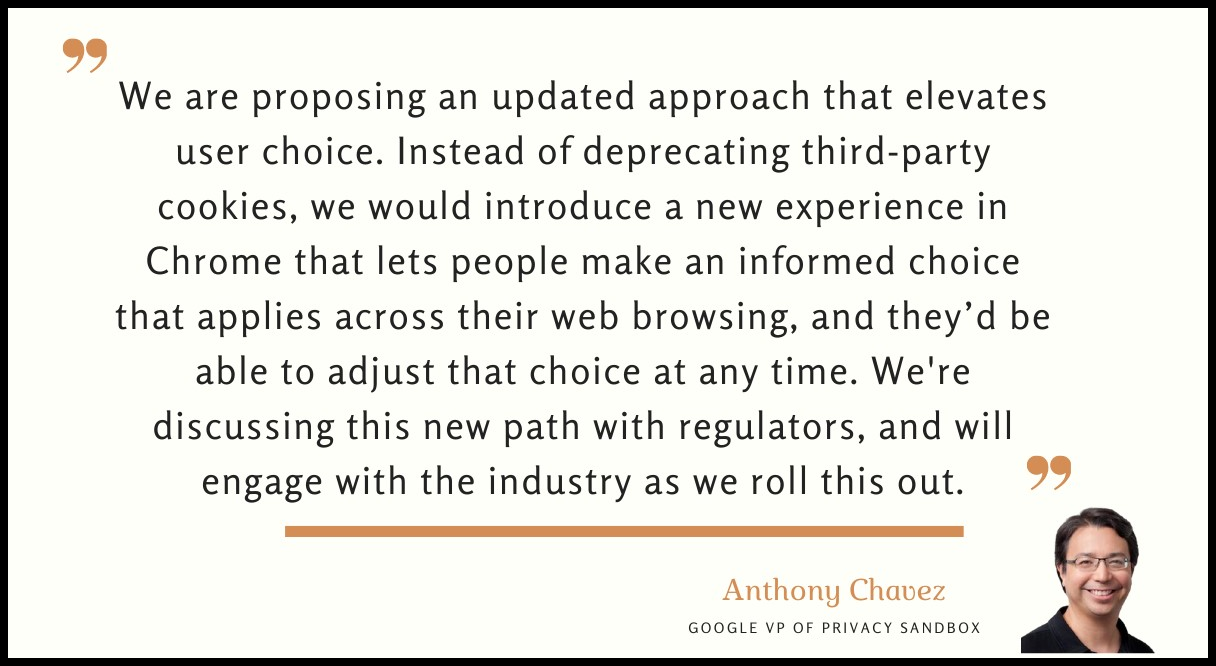Introduction
As businesses start to contemplate the switch to first-party data only, they may begin to realize they don’t have the data they need to fuel their campaigns, report on ROI, or make data-backed decisions. Additionally, they may start to see how disconnected their data sources have become, and as pressure to cut costs and increase efficiencies mounts, businesses may be caught off guard.
For those with a marketing data strategy, they’ll be several steps ahead. A marketing data strategy is the process that supports the acquisition, organization, analysis, and delivery of data to support business objectives. The last part of that sentence is key. A marketing data strategy doesn’t seek to collect and harbor data for the sake it. It is intentional, thought out, and has clear measures of success.
A marketing data strategy also isn’t static. It is dynamic, which means that it needs to be reviewed often and updated regularly. So, if you’ve never created a marketing data strategy or it’s time to update yours, read on to learn the process you’ll need to follow in order to create a marketing data strategy and the benefits it will have on the business.
The Process of Building a Marketing Data Strategy
Data Collection
The first place to start in the marketing data strategy process is creating a list of all data sources. This list should include:
- The platform
- The data passed (dimensions, metrics, and other values)
- The location of where that data will end up
Understanding what data is available to the organization is a critical first step in documenting how and why it is used to support business goals. Keeping track of how data is stored is critical to maintaining customer privacy and adherence to government regulations.
In addition to data sources, the collection process also includes documenting all methods of data collection. From site analytics to surveys and forms to qualitative information like interviews and observations - there are a lot of collection methods, many of which are likely not being utilized to their full potential. With the upcoming reliance on first-party data, this type of information will become invaluable.
This can be a daunting first step. If you’d like help, we can help you interview stakeholders to determine how data ladders backup to business goals, map all your data sources, and create KPI matrices.
Data Cleaning and Preparation
Of course, a solid marketing data strategy requires that all data is accurate, clean, and ready to be transformed. This step utilizes the list from the previous step to ensure that all collected data sources are sending data accurately and that the output is in a form that can be used by the chosen analysis tool (Bigquery, PowerBI, Google Analytics, etc).
For example, you may have a URL dimension coming from two tools. Tool A may include the TLD (e.g. www.yourdomain.com) and Tool B may only include the URL string after the first slug (e.g. /your-folder). You will want to ensure that a single format is used and that the data has been joined together in a way that supports the next step - analysis.
Data Analysis
You have all this great data, now let’s do something with it!
Data analysis is a core part of any marketing data strategy and can fall into three buckets:
1). Descriptive Analytics
Descriptive analytics are likely what you and your organization are most familiar with. It is commonly used for reporting as it is an analysis of historical data. All data collected via data mining or aggregation can be used to discover historical trends and patterns, but a descriptive analysis doesn’t try to use the historical trends to make predictions about the future.
2). Predictive Analytics
Predictive analytics, unlike descriptive, makes predictions about the future based on the historical data it is given. This form of analysis typically uses machine learning and statistical modeling to analyze the data and provide likelihoods of future outcomes. The model will produce the raw results of changes to any inputs or potential actions taken, allowing you to compare and contrast results. Some even more advanced methods use deep learning to mimic human decision-making, leading to even more powerful predictions.
You’re probably familiar with some of these concepts given that GA4 comes with some predictive analysis features built-it. However, it’s always good to remember that these models are only as good as the data they are built on. If you need help getting GA4 setup so you can make the most use of the predictive analytics features built into GA4, we’re here for you!
3). Prescriptive Analytics
While predictive analytics will provide outcomes based on inputs you control, prescriptive analytics actually tells organizations the best course of action based on all available data. Prescriptive analytics builds off the data sets used in descriptive and predictive analysis, and then runs them through an algorithm that creates and re-creates possible decisions that could affect an organization in different ways. It then provides the best course of action for the business given all the scenarios it has worked through.
With the focus of this type of analysis being on actionable insights, it’s clear that it is the ultimate form of data-backed decision making that organizations strive for. Only those with the highest level of data maturity will be able to achieve prescriptive analytics.
|
If you’d like to know where your organization falls on the data maturity continuum, hit us up! We can not only tell you what you need to get to the next level of maturity, but also how you can best leverage your data for the level you’re at! |
Data Integration
Having all this data is great, but won’t matter if no one is using it to support business decisions. Data integration is a way to ensure that people throughout the organization have access to enterprise-level data and share it internally as needed. This could be by setting up dashboards in a centralized system or sending out reports to various departments. This all depends on how the organization shares data and how you’d like to structure that access in the future.
One thing to keep in mind when setting up your data integration strategy is the data literacy of the people you are working with. For some people, working with and leveraging data is very natural, and to others it can be very intimidating. While you will never please everyone, it is important to keep the overall level of data literacy in mind when crafting your strategy and consider providing resources and other helpful content to support people as they incorporate data into their daily work lives. In fact, according to Google, 75% of marketers say the biggest barrier to using data insights is a lack of education and training on data and analytics.
The Benefits of a Marketing Data Strategy
Of course, there are numerous benefits to creating a marketing data strategy. We’ll cover some of the biggest benefits below.
Improved Customer Understanding
Better data means a better understanding of your customers and their journey. Creating a marketing data strategy that incorporates both quantitative and qualitative data is far more valuable than just quantitative data alone, and will set you apart from competitors. Understanding not only what your customers did on your digital properties, but also their motivations, emotions, and problems can help you see your data through different eyes. The combinations of quantitative and qualitative data will give you a new perspective from which to tackle your organization’s toughest customer challenges.
Better Targeting and Personalization
Additionally, you can use your customer-centric data for better targeting of ads and other promotional content. With the deprecation of third-party cookies, we will see a rise in contextual advertising, which means understanding your customers, what digital spaces they spend time in, and their interests.
Personalization is another marketing strategy that will benefit from your marketing data strategy. Few have been able to effectively implement a personalization strategy, but it is continuing to be a hot topic in the marketing community. A cohesive marketing data strategy will allow you to start segmenting users into buckets based on their activities, allowing you to serve personalized experiences to folks who fit those buckets.
Increased Efficiency and Productivity
A major part of an effective marketing data strategy is integrating data into and throughout your organization through data integration. By getting everyone on board with using the same data to drive each department's own decision making, you are increasing the efficiency and productivity of the entire organization. In fact, Google found that 86% of senior executives agree that eliminating organizational silos is critical to expanding the use of data and analytics in decision-making.
When data is clean, accessible, and accurate, profitable business decisions are easily identified and help increase worker productivity. A 2020 study from Gartner found that organizations estimate the average cost of poor data quality at -$12.8 million dollars per year, and this number is likely to rise as environments become increasingly digitized and complex.
The report also found that the need to work towards data quality across data sources and landscapes is the joint-biggest challenge in data management practice.
Conclusion
As you can see, taking the time to document your data environment, properly clean and sort the data, determine how to analyze the data, and distribute it to your organization can have a huge impact on the business as a whole. From improved understanding of the customer journey to advanced marketing strategies to an overall increase in business productivity - creating and maintaining a cohesive marketing data strategy is well worth the investment!
|
Don’t leave your future business success up to an educated guess. Get in touch with us to get your Digital Maturity Assessment and find out how you can improve your data strategy! |


